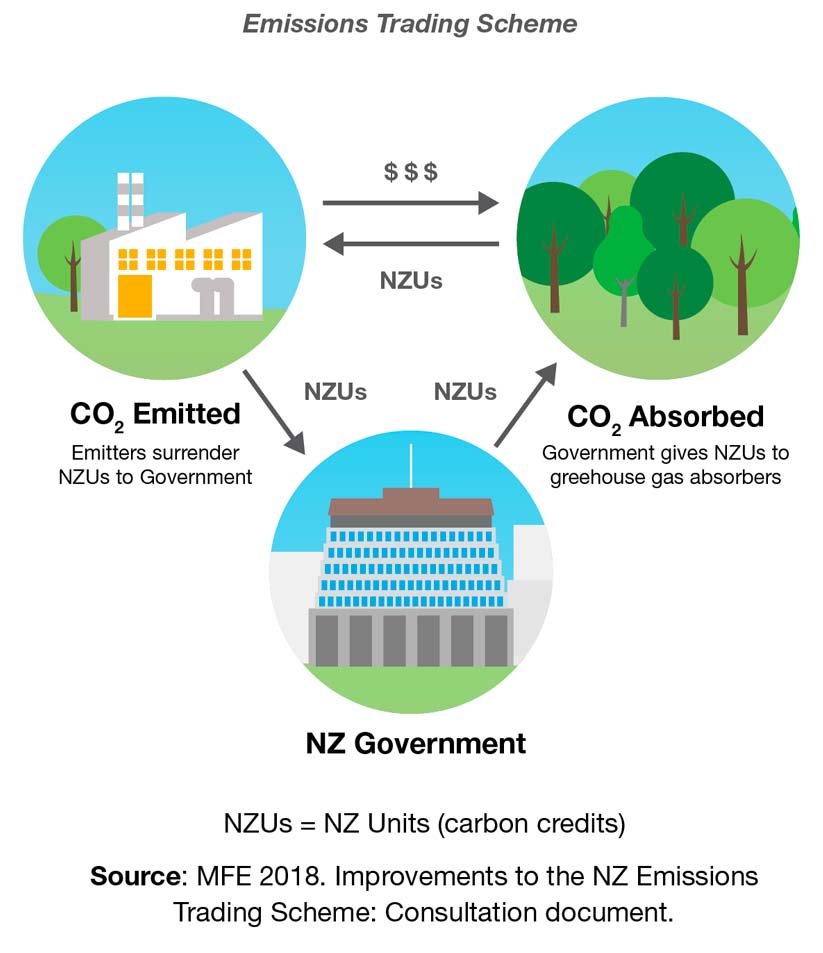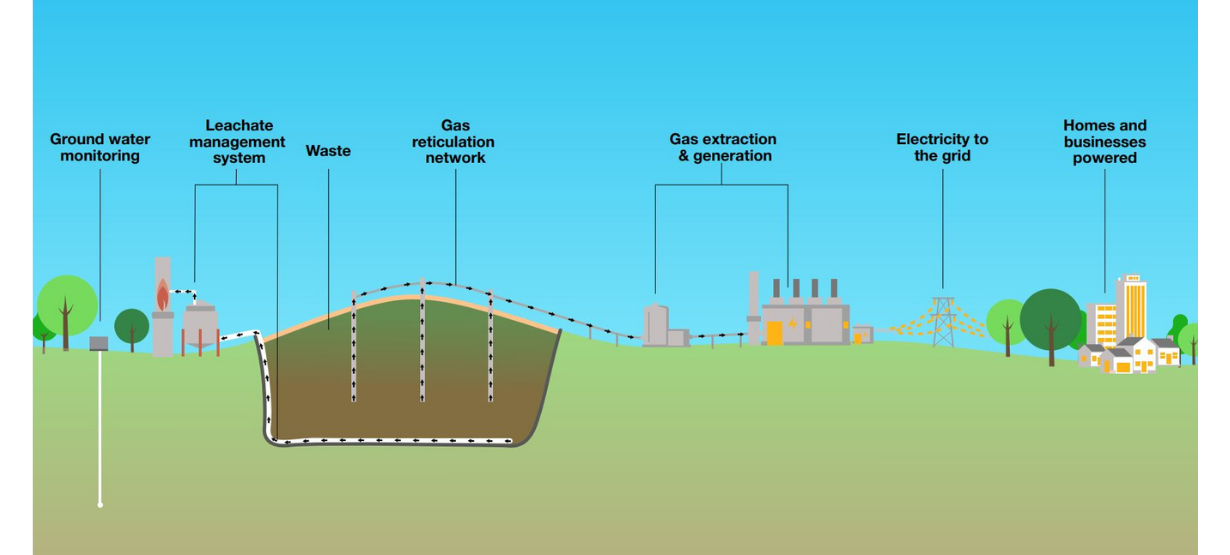What is the Emissions Trading Scheme (ETS)?
The ETS, or the Scheme, was introduced in 2008 to address climate change. It helps New
Zealand meet the international targets we have committed to as a country by putting a price
on greenhouse gas emissions.
Through the Scheme, organisations can earn credits (called NZ units) for activities that
absorb carbon dioxide (carbon dioxide is the main type of greenhouse gas). To make up for greenhouse emissions they generate, organisations also pay for credits through the Scheme or they can invest in activities to reduce their greenhouse gas emissions.
Each year, units tend to increase in value as the amount of units available is restricted by the
government. This in turn encourages businesses to lower their emissions through innovation and
development of low emission technology.
The Scheme means New Zealanders may pay a higher price for some goods and services because the cost is passed onto their customers.

Landfills and the Emissions Trading Scheme
In 2013, organisations that own landfills were included in the Scheme.
This is because when the organic waste in a landfill, collected from businesses and the community,
breaks down it naturally produces landfill gas – which is made up of a number of gases, including
methane, a greenhouse gas.
To significantly reduce greenhouse gas emissions from our landfills, Waste Management invests
heavily in technology and infrastructure, which enables us to capture over 90% of the landfill gas.
This is then either converted into electricity to supply homes and businesses across New Zealand
or destroyed to stop it entering the atmosphere.
We also purchase credits through the Scheme for any landfill gas that is not captured from our
landfills.
What does this mean for you?
Waste Management passes on to you the cost of purchasing credits through the Scheme, and the
cost of capturing and destroying greenhouse gas, for your waste.
By capturing over 90% of the landfill gas, the number of credits we have to purchase through
the Scheme is reduced. So instead of purchasing a larger number of credits, we use our funds to invest
in the construction, maintenance and technology needed for our landfills to prevent most greenhouse
gas entering the atmosphere in the first place.
At landfills not owned and operated by Waste Management, the landfill operator will purchase the
required credits through the Scheme and pass this on to Waste Management, which will be included in
your disposal charges.

 A well-constructed and managed Landfill & Energy Park can provide a safe environment for your waste and can minimise
A well-constructed and managed Landfill & Energy Park can provide a safe environment for your waste and can minimise